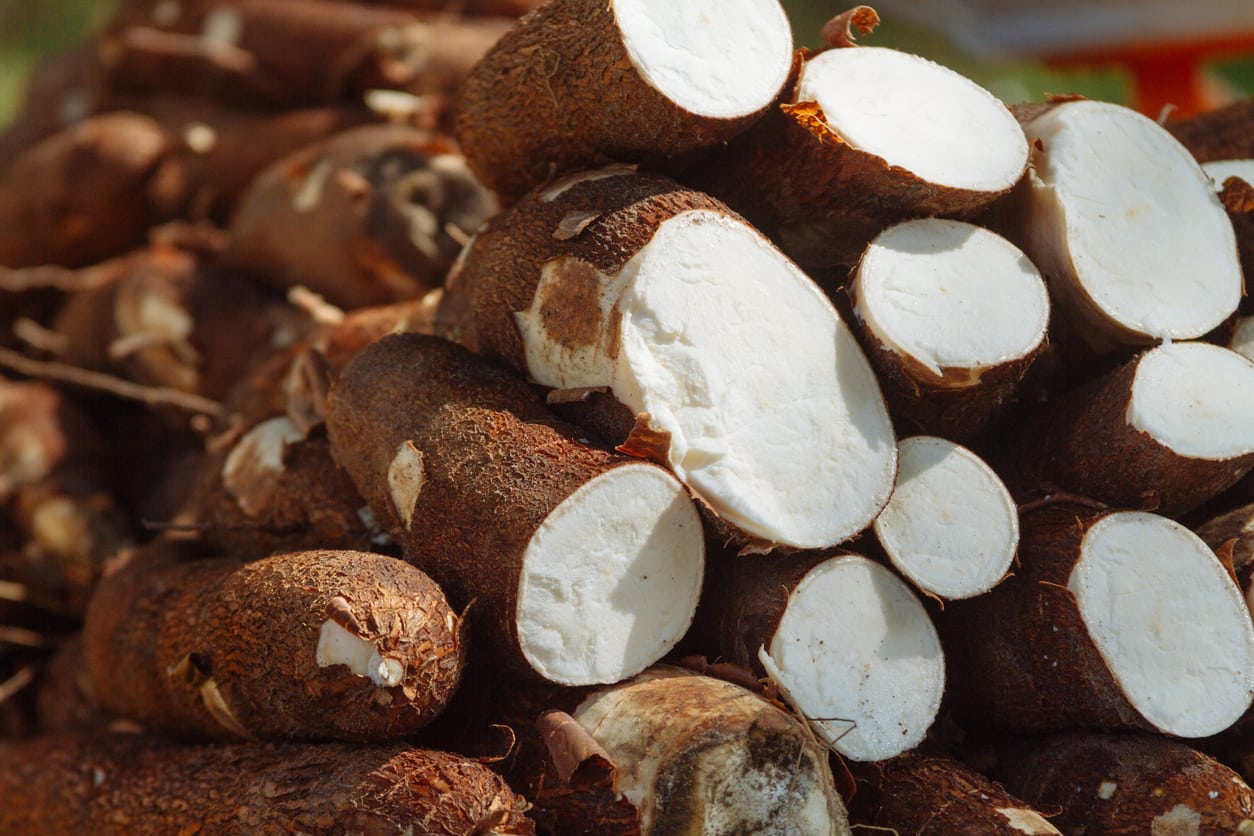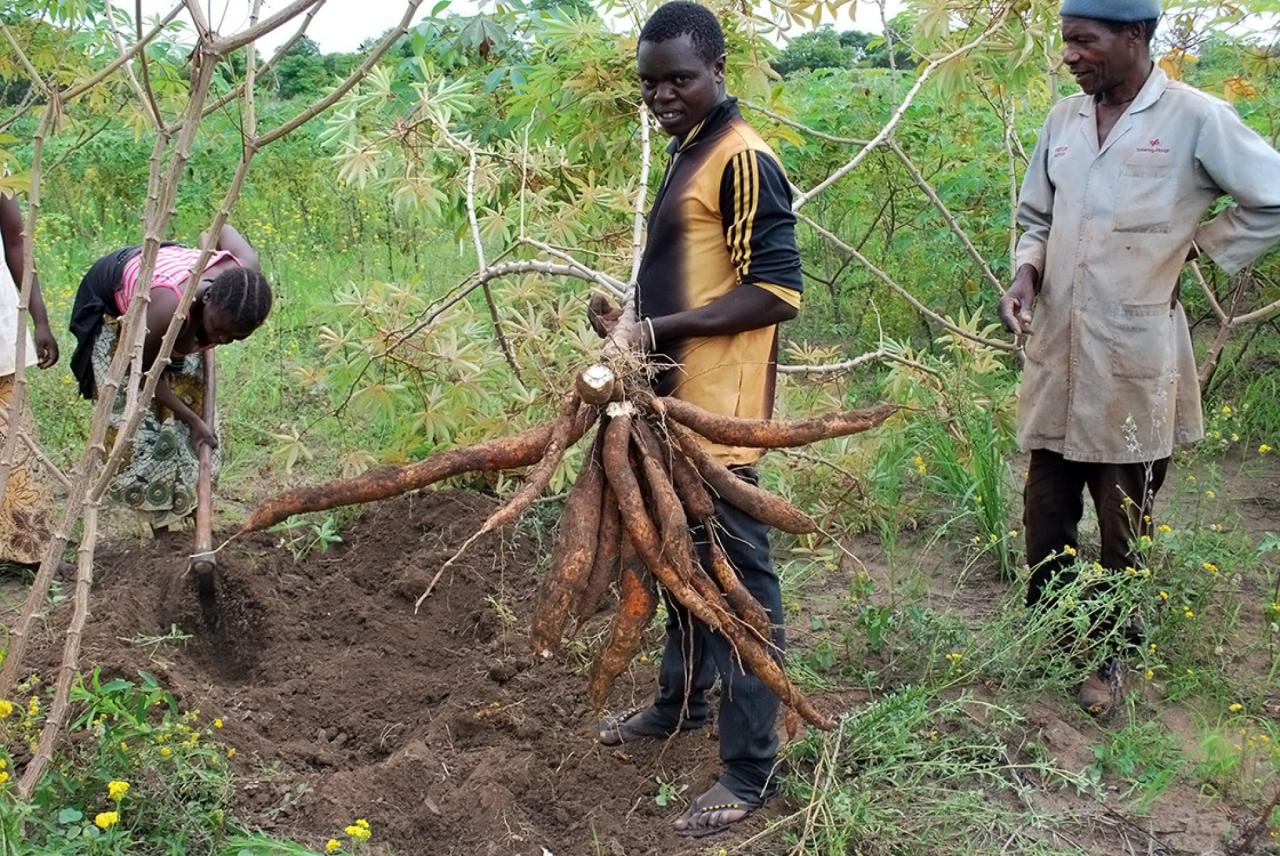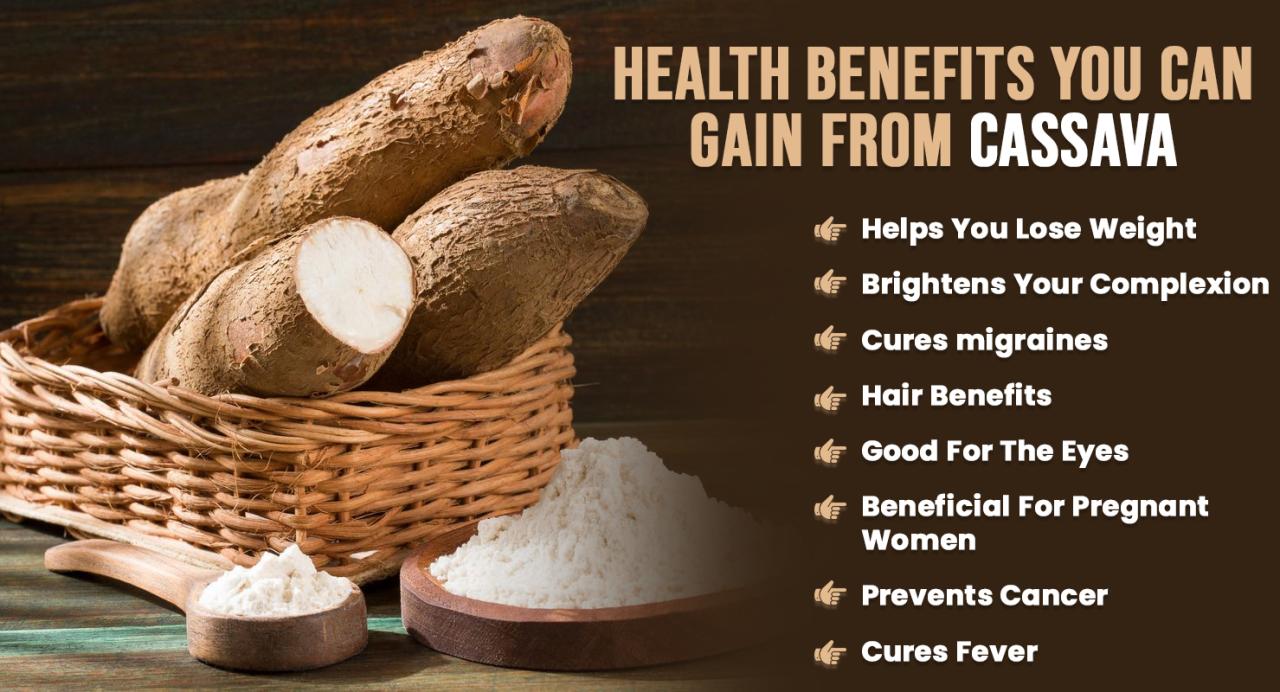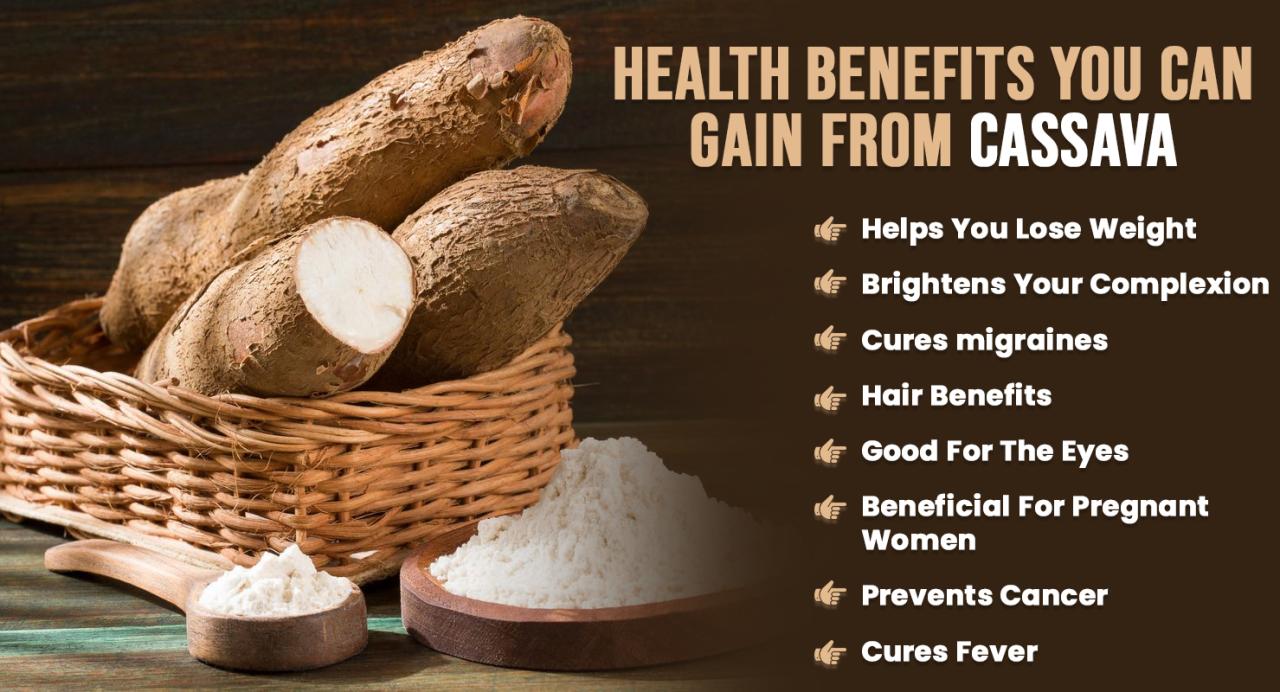The Best Practices for Achieving a Beautiful Cassava Leaf Harvest: Tips for Garden Success takes center stage, guiding you through a journey to abundant, flavorful cassava leaves. This comprehensive guide delves into every aspect of cultivating cassava, from selecting the right variety to harvesting and preserving the leaves.
Whether you’re a seasoned gardener or just starting out, these tips will equip you with the knowledge to cultivate a thriving cassava patch, resulting in a bountiful harvest of delicious leaves for your culinary creations.
Cassava, a versatile root vegetable, is often celebrated for its starchy root. However, its leaves are equally valuable, providing a nutritious and flavorful addition to various dishes. Cassava leaves are a rich source of vitamins, minerals, and fiber, making them a valuable addition to any diet.
With proper care and attention, you can maximize your cassava leaf harvest, ensuring a consistent supply for your culinary needs.
Selecting the Right Cassava Variety: The Best Practices For Achieving A Beautiful Cassava Leaf Harvest: Tips For Garden Success
Choosing the right cassava variety is crucial for maximizing leaf yield and achieving a successful harvest. Different cassava varieties exhibit distinct growth habits, leaf yields, and nutritional content, making it essential to select a variety that aligns with your specific climate and soil conditions.
Understanding Cassava Varieties for Leaf Production
Cassava varieties are broadly categorized into two main groups: those primarily grown for their roots and those cultivated for their leaves. While root varieties focus on starch production, leaf varieties prioritize high leaf yields and nutrient content.
Popular Cassava Varieties for Leaf Production
Here are some popular cassava varieties known for their high leaf yields and nutritional value:
- TMS 96/0183: This variety is highly adaptable to diverse climates and soils, boasting a high leaf yield and excellent nutritional profile. It’s widely cultivated in Africa, Asia, and Latin America.
- TMS 60444: Renowned for its high leaf production, this variety thrives in tropical and subtropical regions. It exhibits excellent disease resistance and can tolerate harsh environmental conditions.
- TMS 30572: This variety is characterized by its rapid growth rate and high leaf yield. It’s particularly well-suited for areas with abundant rainfall and fertile soils.
Factors to Consider When Choosing a Cassava Variety
- Climate: Cassava varieties have varying tolerance levels to different climates. For instance, some varieties excel in hot and humid conditions, while others are better suited for drier climates.
- Soil Type: The soil’s texture, fertility, and pH can influence cassava growth. Certain varieties thrive in sandy soils, while others prefer clay soils.
- Leaf Yield: Selecting a variety with a high leaf yield is crucial for maximizing harvest. Look for varieties known for their prolific leaf production.
- Nutritional Content: Different cassava varieties offer varying levels of essential nutrients. Choose varieties rich in protein, vitamins, and minerals to ensure a nutritious harvest.
Preparing the Soil for Optimal Growth

Cassava thrives in well-prepared soil that provides optimal conditions for root development and healthy growth. Understanding the ideal soil characteristics and implementing effective preparation techniques are crucial for maximizing your cassava harvest.
Soil Characteristics for Cassava, The Best Practices for Achieving a Beautiful Cassava Leaf Harvest: Tips for Garden Success
The ideal soil for cassava cultivation should possess specific characteristics that promote healthy growth and yield. These characteristics include:
- pH:Cassava prefers slightly acidic to neutral soil with a pH range of 5.5 to 6.5. This pH level allows for optimal nutrient uptake and prevents the development of nutrient deficiencies.
- Drainage:Cassava requires well-drained soil to prevent waterlogging, which can lead to root rot and stunted growth. Soil should allow for efficient water drainage while retaining sufficient moisture for healthy plant development.
- Nutrient Content:Cassava is a heavy feeder and requires ample nutrients, particularly nitrogen, phosphorus, and potassium, for optimal growth. Soil should have a good balance of these nutrients to support healthy foliage and tuber formation.
Soil Amendment Techniques
Amending the soil before planting cassava is essential for improving its fertility and structure. This involves incorporating organic matter and essential nutrients to create a favorable environment for root growth.
- Composting:Adding compost to the soil provides essential nutrients, improves soil structure, and enhances water retention. Compost is a natural source of organic matter that promotes beneficial microbial activity in the soil.
- Manure:Applying animal manure to the soil provides organic matter and nutrients, improving soil fertility and structure. Manure also contributes to soil aeration and drainage.
- Green Manure:Planting cover crops like legumes or grasses and then incorporating them into the soil can improve soil fertility and structure. Green manure crops add organic matter, nitrogen, and other essential nutrients to the soil.
Soil Preparation Plan
A well-defined soil preparation plan is crucial for creating optimal conditions for cassava growth. This plan should include the following steps:
- Tilling:Tilling the soil to a depth of 15-20 cm helps break up compacted soil, improve drainage, and incorporate amendments. This process also aerates the soil, making it easier for roots to penetrate and grow.
- Composting:After tilling, incorporate compost into the soil at a rate of 2-4 kg per square meter. This will provide essential nutrients and improve soil structure.
- Fertilizer Application:Apply a balanced fertilizer, such as 10-10-10, at a rate of 1-2 kg per square meter. This will provide the necessary nutrients for healthy cassava growth.
Planting and Spacing for Maximum Leaf Yield

Proper planting techniques are crucial for ensuring healthy cassava growth, maximizing leaf yield, and achieving a bountiful harvest. This involves selecting the right planting depth and spacing, ensuring optimal root and leaf development, and utilizing a planting calendar to optimize harvest timing.
Just like understanding the optimal conditions for a bountiful cassava leaf harvest, mastering the art of rose propagation is essential for a thriving garden. If you’re looking to expand your rose collection, Expert Rose Growing: How To Propagate Roses From Cuttings for a Stunning Garden provides valuable insights into this process.
Similar to ensuring proper soil and light for cassava, understanding the right techniques for rose cuttings is key to success. With a little care and attention, you can enjoy the beauty of new rose bushes in your garden.
Planting Depth and Spacing
The optimal planting depth and spacing for cassava cuttings can vary depending on the variety and soil type. Generally, cassava cuttings should be planted at a depth of 10-15 cm, ensuring that at least two nodes are buried. This depth allows for proper root development and prevents the cuttings from drying out.
Spacing between cassava plants should be approximately 1 meter apart in rows, with rows spaced 1.5 meters apart. This spacing allows for adequate sunlight penetration and air circulation, minimizing the risk of diseases and pests.
Importance of Proper Planting Techniques
Proper planting techniques are essential for maximizing leaf yield and ensuring the healthy development of both roots and leaves.
- Ensuring proper root development:Planting cassava cuttings at the appropriate depth allows for the development of a strong root system. This is crucial for absorbing nutrients and water from the soil, contributing to overall plant health and leaf production.
- Maximizing leaf production:Adequate spacing between plants promotes healthy leaf growth by ensuring sufficient sunlight penetration and air circulation. This prevents overcrowding and reduces the risk of diseases and pests that can negatively impact leaf yield.
- Preventing competition for resources:Proper spacing ensures that plants have access to sufficient resources, such as sunlight, water, and nutrients, reducing competition and maximizing growth potential.
Using a Planting Calendar
A planting calendar can help maximize harvest timing and ensure that cassava plants are harvested at their peak leaf production stage.
- Optimizing harvest timing:Cassava leaves are most nutritious and flavorful when harvested during their peak growth period. A planting calendar helps determine the ideal time to plant cassava cuttings to ensure that leaves are ready for harvest at the desired time.
- Maximizing leaf yield:By planting cassava cuttings at the optimal time, growers can ensure that leaves are harvested during their peak production stage, maximizing yield and ensuring the best quality.
- Planning for continuous harvest:A planting calendar can be used to plan staggered plantings, allowing for a continuous supply of fresh cassava leaves throughout the year. This can be particularly beneficial for farmers who rely on cassava leaves as a primary source of income or for home consumption.
Providing Adequate Water and Sunlight
Cassava plants, like most other crops, thrive with the right balance of water and sunlight. These factors directly influence their growth and yield, particularly the production of abundant, healthy leaves.
Water Requirements for Cassava
The water requirements of cassava plants vary depending on their growth stage. Young plants, during the initial establishment phase, need regular watering to help them develop strong root systems. As the plants mature, their water needs increase significantly, especially during the period of rapid leaf growth.
This is when the plants are actively photosynthesizing and require a steady supply of water to support their metabolic processes. During the dry season, it is crucial to provide sufficient irrigation to prevent wilting and ensure optimal leaf production. On the other hand, overwatering can lead to root rot and other problems.
It is essential to strike a balance and provide the right amount of water at the right time.
Efficient Irrigation Strategies
- Drip Irrigation: This method delivers water directly to the root zone of the plants, minimizing water loss through evaporation and runoff. Drip irrigation systems are highly efficient, allowing for precise water application and reducing the risk of overwatering.
- Mulching: Applying a layer of organic mulch, such as straw, wood chips, or compost, around the base of the cassava plants helps retain soil moisture, reduce evaporation, and suppress weed growth. Mulch also helps regulate soil temperature, creating a more favorable environment for root development.
Importance of Sunlight
Cassava plants are sun-loving crops and require ample sunlight for optimal photosynthesis. Sunlight provides the energy needed for the plants to produce carbohydrates, which are essential for growth and leaf production. Cassava plants need at least 6 hours of direct sunlight per day.
In areas with limited sunlight, it is important to select a location with good sun exposure or consider using supplemental lighting.
“The amount of sunlight a cassava plant receives directly impacts its leaf yield. Plants grown in shady areas tend to produce fewer leaves and have smaller leaf size compared to those grown in full sun.”
Essential Nutrient Management for Abundant Leaves
Cassava plants are heavy feeders, demanding a steady supply of essential nutrients for optimal growth and leaf production. Understanding the specific nutrient requirements and implementing an effective fertilization strategy is crucial for achieving a bountiful cassava leaf harvest.
Nutrient Requirements for Healthy Leaf Production
Cassava plants require a balanced supply of macronutrients, particularly nitrogen (N), phosphorus (P), and potassium (K), to support healthy leaf development and growth.
- Nitrogen (N):Essential for chlorophyll production, nitrogen directly influences the plant’s ability to photosynthesize, leading to vibrant green leaves and robust growth. Nitrogen deficiency can result in stunted growth, pale leaves, and reduced leaf yield.
- Phosphorus (P):Phosphorus plays a vital role in root development, nutrient absorption, and energy transfer within the plant. Adequate phosphorus levels promote strong root systems, which are crucial for accessing nutrients and water, ultimately contributing to healthy leaf production.
- Potassium (K):Potassium enhances overall plant vigor, contributing to disease resistance, water regulation, and efficient nutrient utilization. Sufficient potassium levels promote healthy leaf growth, reduce leaf wilting, and improve the plant’s resilience to stress.
Fertilizer Schedule for Balanced Nutrition
A well-planned fertilizer schedule ensures that the cassava plants receive the necessary nutrients throughout their growth cycle.
- Initial Application:At planting, incorporate a balanced fertilizer containing NPK (nitrogen, phosphorus, potassium) into the soil. This provides a foundational supply of nutrients for initial growth and root development.
- First Topdressing:Approximately 4-6 weeks after planting, apply a second dose of fertilizer, focusing on nitrogen-rich formulations. This boosts leaf growth and supports the plant’s vegetative phase.
- Subsequent Topdressings:Continue to apply fertilizer every 4-6 weeks throughout the growing season, adjusting the NPK ratio based on the plant’s growth stage. As the plants mature, increase the potassium content to support overall plant health and leaf quality.
Benefits of Organic Fertilizers and Compost
Organic fertilizers and compost offer a sustainable and eco-friendly approach to nourishing cassava plants, providing numerous benefits:
- Improved Soil Structure:Organic matter, like compost, enhances soil structure by improving aeration and water retention, creating an ideal environment for root growth and nutrient absorption.
- Increased Soil Fertility:Organic fertilizers gradually release nutrients over time, promoting a steady and sustained supply to the plants, unlike synthetic fertilizers which can cause nutrient imbalances.
- Enhanced Leaf Quality:Organic fertilizers often contain micronutrients and beneficial microorganisms that contribute to the overall health and quality of the leaves, resulting in more vibrant and nutritious foliage.
- Reduced Environmental Impact:Organic practices minimize the use of synthetic chemicals, reducing their potential negative impact on the environment and promoting sustainable agricultural practices.
Tip:Consider using a combination of organic and synthetic fertilizers to achieve optimal nutrient balance and maximize leaf production. For example, apply a balanced organic fertilizer at planting and supplement with a nitrogen-rich synthetic fertilizer during the vegetative growth phase.
Preventing Pests and Diseases
A healthy cassava crop requires proactive pest and disease management. Understanding the common threats and implementing preventive measures can significantly reduce the risk of infestations and ensure a bountiful leaf harvest.
Common Pests and Diseases
A range of pests and diseases can impact cassava leaf production, leading to reduced yield and quality. Some of the most common include:
- Cassava mealybug:These small, white insects feed on plant sap, causing stunted growth and leaf discoloration. They also secrete honeydew, which can attract other pests and lead to fungal infections.
- Cassava green mite:These tiny mites feed on the underside of leaves, causing stippling and leaf drop. Severe infestations can significantly reduce photosynthetic activity.
- Cassava mosaic disease (CMD):This viral disease, transmitted by whiteflies, causes mosaic patterns on leaves and stunted growth. CMD can significantly reduce yield and even kill plants.
- Cassava bacterial blight:This bacterial disease causes leaf spots and wilting. It can spread rapidly in wet conditions and lead to significant yield losses.
- Cassava anthracnose:This fungal disease causes leaf spots and stem lesions. It can spread quickly in humid conditions and lead to significant yield losses.
Preventing Pest and Disease Infestations
Implementing a comprehensive pest and disease management strategy is crucial for protecting your cassava crop. Some effective methods include:
- Crop rotation:Rotating cassava with other crops can help break the life cycle of pests and diseases that may be specific to cassava. For example, planting legumes, such as beans or peas, can help improve soil health and reduce the incidence of some pests.
- Companion planting:Planting certain plants alongside cassava can deter pests and diseases. For example, planting garlic or onions near cassava can help repel some insects.
- Organic pest control:There are several organic methods that can be used to control pests and diseases. These include using insecticidal soaps, neem oil, or other botanical pesticides.
- Resistant varieties:Choosing cassava varieties that are resistant to common pests and diseases can help minimize the risk of infestations.
- Good sanitation:Removing and destroying infected plants can help prevent the spread of diseases.
Identifying and Treating Pest and Disease Problems
Early detection and treatment are crucial for controlling pest and disease infestations.
- Regular inspection:Regularly inspect your cassava plants for signs of pests and diseases. Look for discoloration, wilting, leaf spots, or insect activity.
- Identify the problem:Once you have identified a pest or disease, you can take appropriate control measures.
- Seek professional advice:If you are unsure about the best way to treat a pest or disease problem, consult a local agricultural extension office or a pest control professional.
Harvesting Cassava Leaves for Maximum Yield

Harvesting cassava leaves at the right time is crucial for maximizing their nutritional content and flavor, while also ensuring the plant’s health and future growth. The ideal time to harvest cassava leaves is when they are young and tender, typically between 4 and 6 weeks after planting.
These leaves are rich in vitamins, minerals, and antioxidants, making them a valuable addition to various dishes.
Harvesting Techniques for Sustainable Cassava Leaf Production
To ensure a consistent supply of cassava leaves while promoting plant health, it’s essential to employ proper harvesting techniques. These techniques aim to minimize damage to the plant, allowing it to continue producing leaves for an extended period.
- Harvesting at the Right Stage:The ideal time to harvest cassava leaves is when they are young and tender, typically between 4 and 6 weeks after planting. Leaves at this stage are rich in nutrients and have a delicate flavor.
- Selective Harvesting:Instead of harvesting all leaves, selectively choose the largest and healthiest leaves from the plant. Leave the smaller, younger leaves to continue growing.
- Using Sharp Tools:When harvesting, use a sharp knife or pruning shears to make clean cuts. Avoid tearing or pulling the leaves, as this can damage the plant.
- Leaving Enough Leaves:Always leave at least 4-5 healthy leaves on each plant to ensure it can continue to photosynthesize and grow.
- Harvesting at Regular Intervals:To maintain a consistent supply of fresh leaves, harvest every 3-4 weeks. This allows the plant to recover and produce new leaves.
Establishing a Harvest Schedule for Continuous Supply
A well-planned harvest schedule is essential for ensuring a consistent supply of fresh cassava leaves throughout the growing season. This schedule should consider the plant’s growth cycle and the desired frequency of harvesting.
- Initial Harvest:The first harvest should take place approximately 4-6 weeks after planting.
- Subsequent Harvests:After the initial harvest, continue to harvest at regular intervals, typically every 3-4 weeks.
- Monitoring Plant Growth:Keep a close eye on the plant’s growth. If the leaves appear to be growing slowly, extend the harvest interval.
- Adjusting the Schedule:As the plant matures, the harvest schedule may need to be adjusted. For example, the harvest interval may need to be extended to 4-5 weeks.
Storage and Preservation of Cassava Leaves
Harvesting cassava leaves at the peak of their freshness is crucial for maintaining their nutritional value and ensuring their use in various culinary applications. However, the delicate nature of these leaves necessitates proper storage and preservation methods to extend their shelf life and prevent spoilage.
Just as timing is crucial for achieving a bountiful cassava leaf harvest, it’s also essential for establishing a thriving lawn. Understanding the best times to sow grass seed can significantly impact the success of your lawn care efforts, leading to a lush and vibrant landscape.
Similarly, knowing the ideal time to harvest cassava leaves ensures maximum yield and nutritional value, contributing to a flourishing garden.
This section explores different techniques for storing and preserving harvested cassava leaves, emphasizing the advantages and disadvantages of each method.
Refrigeration
Refrigeration is a common and effective method for preserving the freshness of cassava leaves for a short period. Refrigeration slows down the enzymatic activity that leads to spoilage, extending the shelf life of the leaves.
- Wash the cassava leaves thoroughly and pat them dry with a clean towel.
- Store the leaves in airtight containers or plastic bags to prevent moisture loss and cross-contamination with other foods.
- Place the containers or bags in the refrigerator at a temperature of 4°C (39°F) or lower.
- Cassava leaves stored in the refrigerator can remain fresh for up to 3-5 days.
Refrigeration helps maintain the color, texture, and nutritional content of cassava leaves, making them ideal for immediate use or within a few days.
Freezing
Freezing is an excellent method for preserving cassava leaves for longer durations. Freezing effectively inhibits the growth of microorganisms and slows down enzymatic activity, preserving the leaves for several months.
- Blanch the cassava leaves by immersing them in boiling water for 1-2 minutes. This process deactivates enzymes that cause discoloration and loss of texture during freezing.
- Immediately plunge the blanched leaves into ice water to stop the cooking process.
- Drain the leaves thoroughly and pat them dry.
- Pack the leaves in freezer-safe bags or containers, leaving some air space for expansion during freezing.
- Label the bags or containers with the date of freezing.
- Place the bags or containers in the freezer at a temperature of -18°C (0°F) or lower.
- Frozen cassava leaves can remain fresh for up to 6-12 months.
Freezing allows for a longer shelf life, making cassava leaves available for use throughout the year. However, freezing can cause some changes in texture and color.
Drying
Drying is a traditional method for preserving cassava leaves for extended periods. Drying removes moisture from the leaves, inhibiting microbial growth and extending their shelf life for several months.
- Wash the cassava leaves thoroughly and pat them dry.
- Spread the leaves in a single layer on a clean, dry surface, such as a drying rack or a tray lined with parchment paper.
- Dry the leaves in a well-ventilated area, out of direct sunlight, at a temperature of 35-40°C (95-104°F).
- Turn the leaves periodically to ensure even drying.
- Dried cassava leaves are brittle and can be stored in airtight containers in a cool, dry place.
- Dried cassava leaves can remain fresh for up to 6-12 months.
Drying is a simple and effective method for preserving cassava leaves, but it can result in a change in flavor and texture.
Outcome Summary
Cultivating a bountiful cassava leaf harvest is a rewarding experience, offering both culinary satisfaction and the pride of nurturing a flourishing garden. By implementing these best practices, you’ll unlock the secrets to growing healthy, flavorful cassava leaves. From selecting the ideal variety to ensuring proper nutrient management and pest control, each step contributes to a thriving cassava patch.
Remember, consistency and careful attention are key to achieving a successful harvest. So, roll up your sleeves, get your hands dirty, and embark on a journey to cultivating beautiful cassava leaves that will enhance your culinary endeavors.
Essential Questionnaire
What are the best ways to cook cassava leaves?
Cassava leaves can be cooked in a variety of ways, including steaming, boiling, and stir-frying. They are often used in soups, stews, and salads.
How long does it take for cassava to mature?
Cassava typically takes 6-12 months to mature, depending on the variety and growing conditions.
Can I grow cassava in containers?
Yes, cassava can be grown in containers, but it will require a large pot (at least 15 gallons) and regular fertilization.
What are the signs of a healthy cassava plant?
A healthy cassava plant will have dark green leaves, a strong stem, and no signs of pests or diseases.
